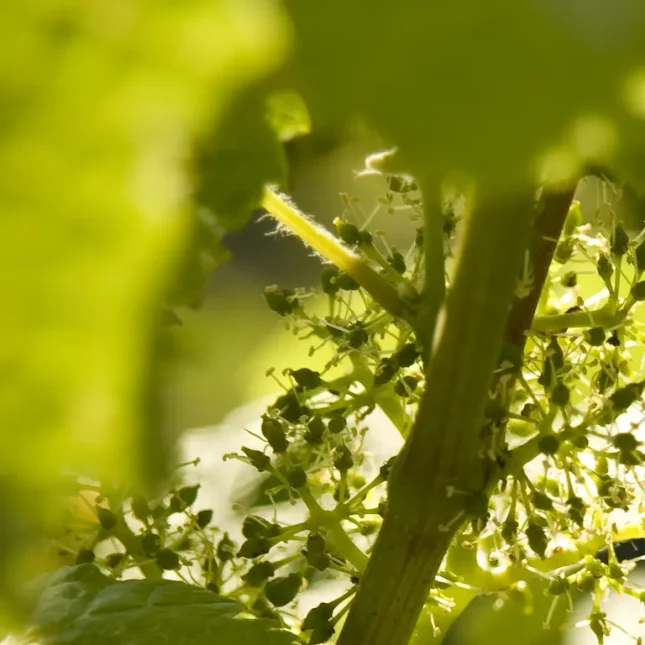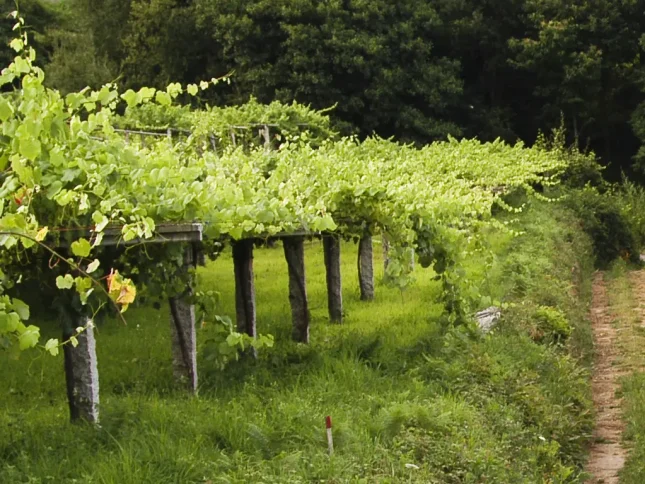The cultivation of vines in Galicia dates back thousands of years; there is evidence tracing it back to the Celtic settlements that once inhabited these lands. However, it was the Romans who popularized the art of viticulture, and even today, spectacular Rías Baixas Albariño vineyards can be found along the banks of Galicia’s Atlantic rivers.
Galicia is home to more than a hundred catalogued native grape varieties, among them the Albariño grape, one of the most prized. Although legend long suggested that it was introduced from Central Europe during the Middle Ages by monks travelling the Camino de Santiago, recent genetic studies have confirmed its genuinely Galician origin.
The Albariño grape is small and round, with a greenish-yellow hue when ripe. Its skin is delicate, and its pulp is soft, juicy, and sweet, with floral aromas. The clusters are compact and small, maturing slowly under the influence of warm temperatures moderated by the Atlantic breeze from the Galician estuaries (rías). Traditionally, in Rías Baixas vineyards, vines were trained using the high pergola system, where branches hang horizontally to maximize sunlight exposure and ensure excellent airflow around the grape clusters — a method that helps prevent diseases such as mildew or oidium.
For centuries, Galicians have celebrated and shared handcrafted Albariño wines made from vines planted along the edges of their estates. However, due to the delicacy and low yield of the vine, many growers turned to hybrid varieties that offered higher production at the expense of wine quality.
By the mid-20th century, the recovery of the native Albariño variety made it possible to produce wines of exceptional quality that gradually earned prestige both within and beyond Galicia. The establishment of the Rías Baixas Designation of Origin in the 1980s marked a turning point in the professionalization of local winemakers and the international recognition of Galician white wines.



